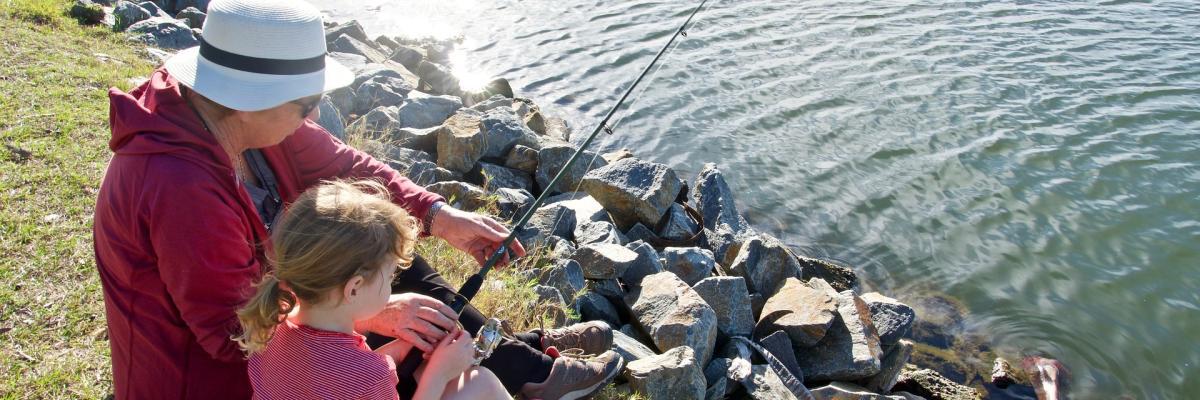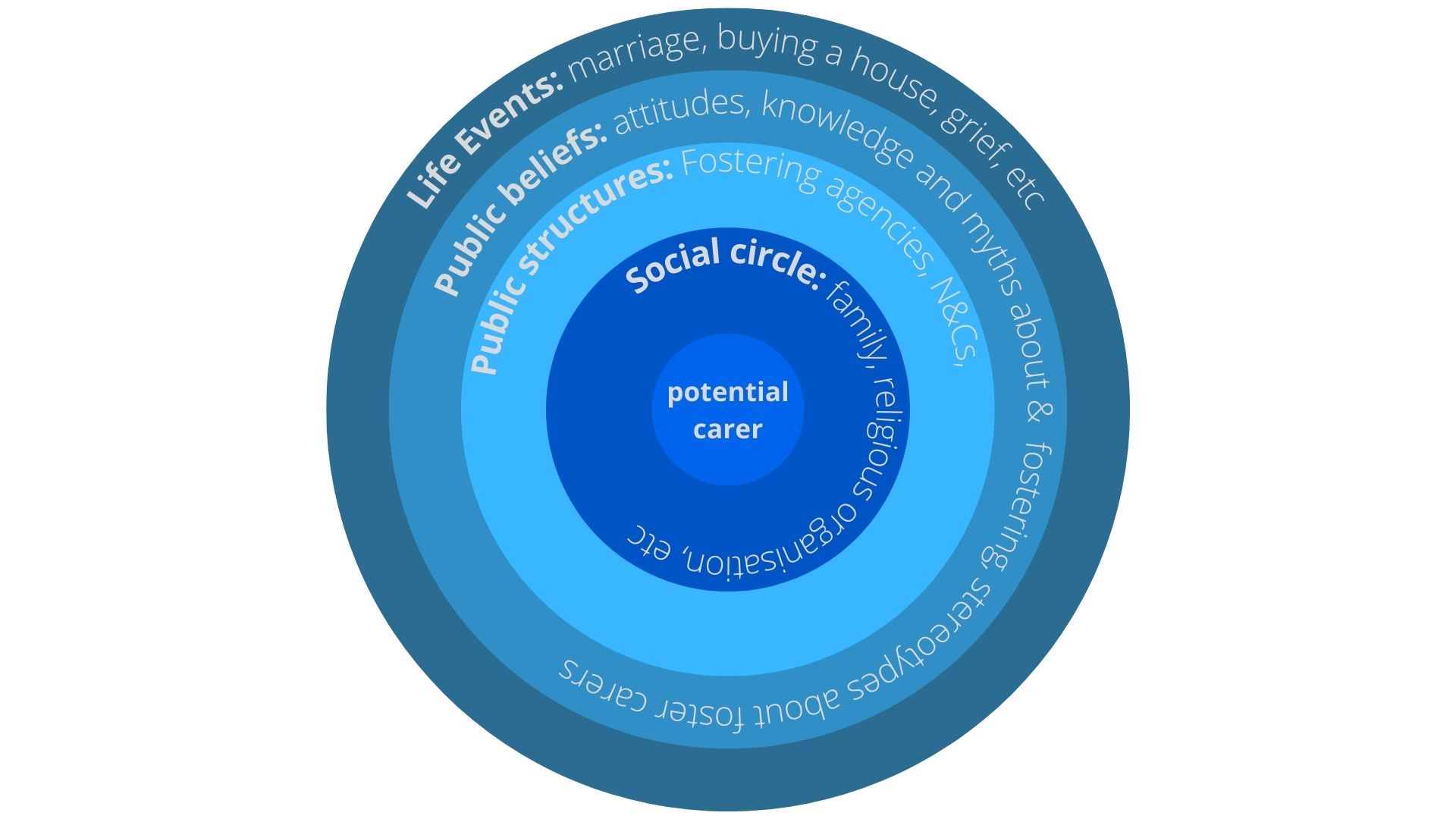In this guest article, Dr Dorothy Neriah details a model for organisations to use to recruit foster carers. It is based on her completed PhD research. In 2019, Dorothy talked about the early stages of the research, including the Three-phase Model.
Why do people choose to foster? This seems like the obvious question that recruiters need an answer to. Indeed research has tried to answer this question by focusing on the individual motivations fostering (De Maeyer and colleagues, 2014). There is consensus within such research that individuals often have multiple motivations for fostering. However, as someone who spent two years running a fostering agency, I believe the bigger question that recruiters are asking is: 'How can I get more people to foster?'
While this model is not a magical formula to get more foster carers, it presents a more detailed picture of the environment within which this decision is made. This in turn has numerous practical implications for recruiters. This model is an adaptation of Bronfenbrenner’s ecological model which shows how environmental factors impact on a child’s development (Bronfenbrenner, 1979). It was created as part of a PhD research project developed using data from an online survey of foster carer recruiters, content analysis of fostering ads on Facebook as well as interviews with recruiters and foster carers as part of two organisation case studies. Like Bronfenbrenner’s model, this model contains multiple 'systems' which represent different levels of influence on the individual. The diagram below presents the model.
1. Social Circle System
At the centre of this model is the potential foster carer and the individual character traits and skills that impact their decision to foster. The next sphere of influence in an individual’s decision to foster is the Social Circle System. Within this system are the regular relationships and environments that a person has regular and direct social contact with such as family, religious organisations, close friends, work, clubs, etc. Recruitment activity aims at introducing and exposing people to foster care. It is general knowledge amongst recruiters that people who have been exposed to fostering are more likely to foster. Why does community-based recruitment work?
- It makes fostering more relatable. Relatability is a highly effective marketing strategy used by advertisers who know that people are more likely to buy into something if they relate with the person selling it. Fostering can seem like an impossibly difficult task to some people. However, seeing someone like you do it makes it seem achievable.
- Birds of a feather flock together. People often share similar values and beliefs with those in their social circles. Therefore, the community within which a successful foster carer is found is very likely to have other individuals with high fostering potential.
- It gives a clear understanding of what fostering is. It is impossible to convey the intricate details, highs and lows of fostering within a single advert or even an entire marketing campaign. However, numerous interactions with a foster carer, and even witnessing them fostering within your community gives a much clearer picture of the fostering task. This helps an individual make a better decision on whether or not they should foster.
- It helps create a supportive environment for foster carers. Foster carers often rely on support from their social circles during the fostering task. Recruiting within a community shapes the community’s understanding of fostering so that they are better placed to support individuals who are interested in or already fostering.
- Community-based recruitment within the social circle system can be resource intensive as it takes time and money to build relationships. Communities also tend to be closed off and wary of outsiders. However, this shouldn’t deter recruiters. There are numerous ways of reaching communities such as engaging with foster carers within them or organisations that are gatekeepers.
2. Public Structures System
The second system in the ecological model is comprised of the numerous stakeholders that participate in fostering recruitment. This includes fostering agencies, local authorities, and other recruiting networks. With hundreds of organisations recruiting, it is a highly competitive market. While this can present a daunting task to some recruiters, it can also be used to their advantage. All foster carer recruitment lies under the same brand. Any form of marketing activity is bound to impact other stakeholders. As one recruiter said, “You raise the tide, all the ships go up.” A couple of ways to take advantage of this is to:
- Joint recruitment campaigns. Pooling together resources has numerous benefits such as increasing the potential reach of a campaign. This can be done on a small scale, with agencies and local authorities within one area, or on a larger scale by participating in national campaigns.
- Strategically piggy backing on current campaigns. When resources are limited, recruiters can take advantage of local campaigns by increasing their recruitment activity when there is another campaign running.
3. Public Beliefs System
The public beliefs system contains cultural beliefs and attitudes about fostering. This includes the various beliefs, misconceptions, and myths about fostering that are barriers to fostering. It can be influenced by news reports and representations of fostering on tv and movies. The myths and misconceptions can be about foster carers, the fostering system or children who are fostered. Recruitment should therefore aim to address these misconceptions. This can be done through awareness raising campaigns or by piggy backing on events happening within the public sphere. If there is a public health campaign raising awareness of adverse childhood experiences, recruiters can take advantage of the momentum of that campaign by running recruitment activities. Another way recruiters can take advantage of events taking place within the public sphere is by running recruitment campaigns around popular movies about fostering. This can be done by hosting screenings of the movie followed by a discussion about fostering or setting up information stands within cinemas that are showing the movie. An adept recruiter can take advantage of the numerous opportunities presented to contribute to the conversations taking place in the public sphere that focus on fostering.
4. Life Events System
This system contains the life transitions that can trigger a person’s decision to foster. Research has shown that there can be a considerable amount of time during which a person considers fostering. There can even be years between the initial decision to foster and the initial inquiry. Fostering can often be delayed as people wait for the right circumstances before they foster. A popular trigger known by many recruiters is the empty nest. Other triggers can include owning a home, having teenage children, or wanting to change careers. While recruiters cannot cause these triggers to occur, they can craft recruitment campaigns around known triggers. For example, running a campaign during university orientation week in order to catch those who are just becoming empty nesters. Or running targeted online ads for people who search for decoration ideas for the spare room or a guest room.
Social marketing suggests that the most effective way to run a campaign is through a multi-pronged strategy that targets factors at the macro and micro level. This ecological model presents the various levels that recruiters can engage in by providing a new way of understanding the environment within which fostering recruitment occurs. This complements three-phase model of recruitment that presents a new to understand the process of recruitment. Together, these two models help recruiters increase the effectiveness of their recruitment practice.
Contact the author: dorothy.neriah@ed.ac.uk


